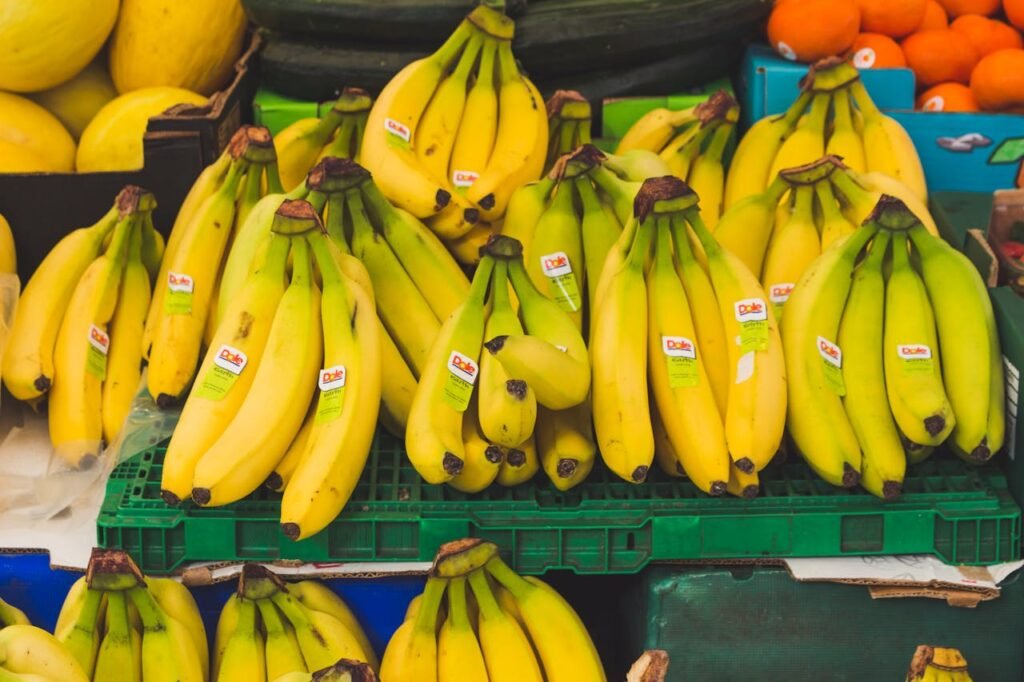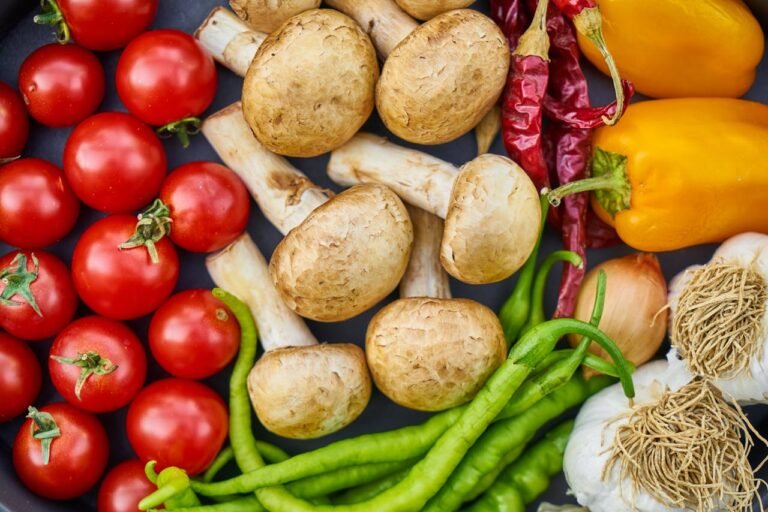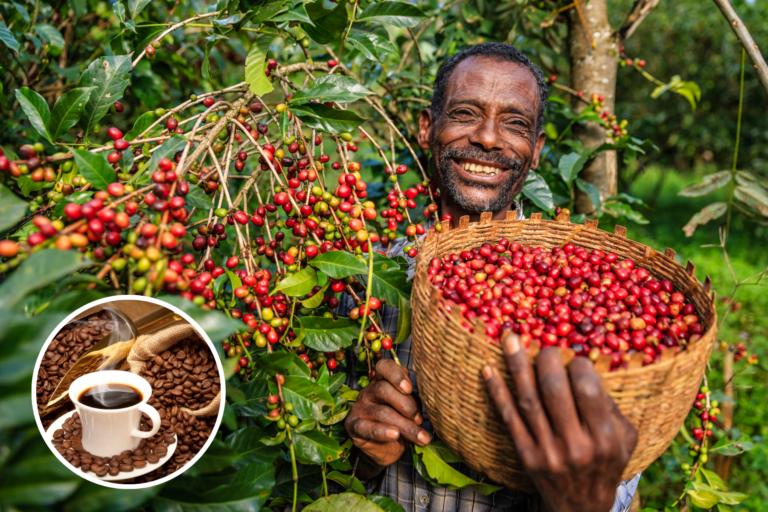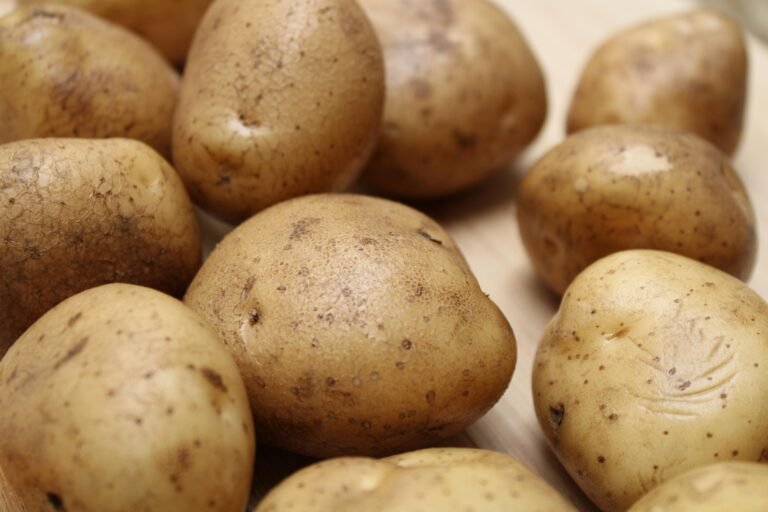
Bananas are one of the most popular fruits globally, not only for their delicious taste but also for their significant nutritional value. Rich in potassium, vitamins, and fiber, bananas play a crucial role in the diets of millions. Beyond their nutritional importance, bananas are an economic powerhouse in the agricultural sector, providing livelihoods for millions of farmers and contributing significantly to the economies of many tropical countries.
In this blog post, we’ll explore the top 10 banana-producing countries in the world. Our rankings are based on the latest data on annual banana production in metric tons. We will delve into the factors that contribute to high banana production in each country and highlight their contributions to the global supply and local communities.
1. India
Annual Banana Production: Approximately 30 million metric tons
India leads the world in banana production, thanks to its vast and diverse agricultural landscape. The states of Tamil Nadu, Maharashtra, and Gujarat are the top banana-producing regions. Bananas are a staple fruit in India, consumed widely across all demographics. The country’s banana industry supports millions of smallholder farmers, contributing significantly to rural economies. India’s advanced agricultural research and development have also led to improved banana varieties and farming techniques.
2. China
Annual Banana Production: Approximately 12 million metric tons
China’s banana production is concentrated in the southern regions, including Guangdong, Guangxi, and Yunnan. The country’s large domestic market drives high production levels, and modern farming practices have increased efficiency and yield. Bananas are a popular fruit in China, consumed fresh and used in various culinary dishes. The Chinese government’s support for agricultural innovation has further bolstered the banana industry.
3. Indonesia
Annual Banana Production: Approximately 7 million metric tons
Indonesia’s banana production is centered in regions like Sumatra, Java, and Sulawesi. The country’s favorable climate and fertile soil create ideal conditions for banana cultivation. Bananas are a crucial part of the Indonesian diet and are also used in traditional medicine and rituals. The industry supports many smallholder farmers, providing essential income and employment opportunities.
4. Philippines
Annual Banana Production: Approximately 6 million metric tons
The Philippines is known for its high-quality bananas, particularly the Cavendish variety, which is a major export product. The Mindanao region is the heart of banana production, benefiting from ideal growing conditions. The banana industry is a significant economic driver, providing jobs and income for thousands of workers. The Philippines’ bananas are exported to markets worldwide, including Japan, China, and the Middle East.
5. Brazil
Annual Banana Production: Approximately 6 million metric tons
Brazil’s banana production is mainly located in the northeastern and southeastern regions, including states like São Paulo, Bahia, and Minas Gerais. Bananas are a staple fruit in Brazil, consumed widely and used in various traditional dishes. The country’s large and diverse agricultural sector supports high production levels, with a focus on both local consumption and export markets.
6. Ecuador
Annual Banana Production: Approximately 6 million metric tons
Ecuador is one of the world’s leading banana exporters, with production concentrated in the coastal regions of Guayas, Los Ríos, and El Oro. The country’s banana industry is highly organized, with large-scale plantations and modern farming techniques. Ecuador’s bananas are renowned for their quality and are exported to markets in North America, Europe, and Asia. The industry plays a vital role in the national economy, providing significant employment and income.
7. Guatemala
Annual Banana Production: Approximately 4 million metric tons
Guatemala’s banana production is concentrated in the regions of Escuintla, Izabal, and San Marcos. The country has a well-established banana industry, with large plantations and advanced farming practices. Bananas are a major export product, contributing significantly to the national economy. The industry supports many jobs and provides vital income for local communities.
8. Thailand
Annual Banana Production: Approximately 3 million metric tons
Thailand’s banana production is spread across various regions, including Chiang Mai, Chonburi, and Phitsanulok. The country is known for its diverse banana varieties, which are consumed fresh and used in traditional dishes and desserts. Thailand’s banana industry supports numerous smallholder farmers and contributes significantly to rural economies. The country also exports bananas to regional markets in Asia.
9. Colombia
Annual Banana Production: Approximately 3 million metric tons
Colombia’s banana production is primarily located in the regions of Antioquia, Magdalena, and La Guajira. The country is a major exporter of bananas, with significant shipments to North America and Europe. Colombia’s banana industry is characterized by large plantations and modern agricultural practices. The industry plays a crucial role in the national economy, providing employment and income for many workers.
10. Vietnam
Annual Banana Production: Approximately 2 million metric tons
Vietnam’s banana production is concentrated in the regions of Dong Nai, Long An, and Tien Giang. Bananas are an important fruit in Vietnam, consumed widely and used in various culinary dishes. The country’s banana industry supports many smallholder farmers and contributes significantly to rural economies. Vietnam also exports bananas to regional markets, enhancing its economic impact.
Conclusion:
The top banana-producing countries play a vital role in meeting the global demand for this essential fruit. From India and China to Vietnam and Colombia, these countries leverage their favorable climates, rich soils, and advanced farming practices to produce millions of metric tons of bananas annually. As the global population grows and dietary preferences evolve, the banana industry will face new challenges and opportunities. Sustainability, climate change, and market dynamics will shape the future of banana production, but these countries will undoubtedly continue to be key players in the global market.
Bananas are more than just a fruit; they are a lifeline for millions, providing nutrition, economic stability, and cultural significance. The continued success of the banana industry depends on innovation, resilience, and a commitment to sustainable practices.







